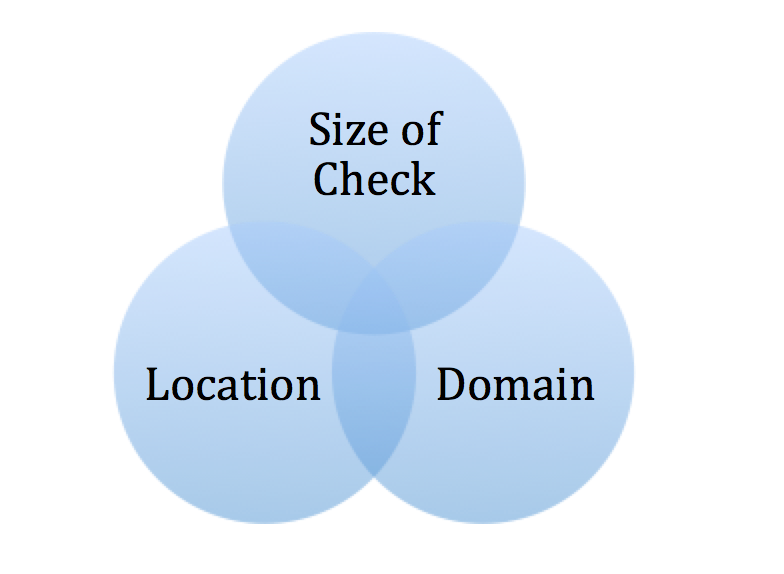The Holy Trinity of Product Development

Not only is it hard to attract talent to your startup (know any free developers in the Bay Area?), as a founder you also have to set the proper structure. A common saying is that you need a “Hacker, Hustler, and a Hipster” on the founding team. In the earliest days that makes sense, especially when you are MVPing and hustling for your first customers trying to find a product-market fit.
Sometime after you have product-market fit and raise a round of funding, you need to hire outside of the core founding team. A lot of founders struggle with the right roles to hire and what the proper structure should be. Some founders hire too many engineers (typically non-technical founders) and some founders hire too many “business” or “marketing” people (typically technical founders), leading to being lopsided in one area. Founders run the risk of being engineering centric or marketing centric in their product development. In reality they need to be customer centric and embrace the Holy Trinity of Product Development.
The Holy Trinity of Product Development: Dev Lead, PM, PMM
When it comes to product development, you need three distinct roles. Those roles are what I call the Holy Trinity of Product Development: Developer Lead, Program Manager (PM), and Product Marketing Manager (PMM). These three roles work together to represent the customer and build the business, ensuring that you are not too engineering focused or too marketing focused. The role in the middle of that fine line is the Program Manager.
Program Manager (PM)
The program manager, sometimes called product manager, is the most important role in the trinity. The PM manages the product definition by talking with customers and potential customers. A PM owns the UX and functional specs and is the chief customer advocate. A PM not only owns the product definition, but also its strategy, position in the marketplace, and if it is a new product, its go to market strategy. Internally, the PM has to coordinate the teams to get the product out the door. This means working closely with the PMM and business teams on what makes sense for the business. The PM can’t set pricing (that is the PMM’s job) but surely can influence it. At the same time the PM has to work with the engineering team to get the product built on time and on budget. While a PM is not required to have any technical or coding skills, the more technical a PM is, the better. At Facebook for example, all PMs usually can write a little Javascript code. This allows the PM to talk to the engineering team in their own language.
What is amazing about the PM is that they have no power or authority over the PMM or dev lead, all they can do is influence the engeneering and marketing teams. It takes a unique skill set to get this done.
Developer Lead
The dev lead has a difficult role to play insofar as they have to represent the engineering team to the PM and PMM as well as work on all of the “tech stuff.” The tech stuff includes: setting the development architecture, get their DevOps game on by organizing the build (doing things like Continuous Integration and Continuous Deployment), coding, and choosing the right technology for the job (Rails or PhP anyone?) The dev lead also needs to keep the engineering team together and motivated and make sure that the agile process is, well, agile.
The hardest part of the dev lead’s job is interfacing with the PM and PMM. The nature of startups is that they are resource constrained and always in a rush to get something shipped. That means an insane amount of pressure on the engineering team. It is the dev lead’s responsibility to work with the business (PM and PMM) in order to set realistic deadlines and proper expectations, all while not being the guy complaining about lack of resources. Not always an easy task..
Product Marketing Manager
While the dev lead represents the engineers and the PM represents the customer, the PMM represents the business. While the PMM is responsible for what all non-marketing people think of as marketing (ad campaigns, trade show booths, email blasts, product placement, media placement, etc), they are also responsible for the business model of the product and making sure that the product makes money (or reaches its broader goals if it is a loss leader.) This means setting pricing, and if this is a freemium product, that is far more complex than you can ever imagine. The PMM is ultimately accountable for the product making money.
The Right Balance
Some startups and companies are tempted to combine the PM and PMM role. This is bad! What happens when you combine these roles is that the focus usually becomes either too customer centric or too marketing centric; you need two people and two distinct roles to prevent this from happening. The right structure creates the right environment. The right people in the wrong structure is a waste of talent, they will not be able to use all of their talents, they will spend too much time fighting the incorrect structure. No amount of free massages, free lunches, and unlimited cookies will fix an improper structure. (Actually it is Google, Facebook, Linkedin, etc who have pioneered the Holy Trinity in Silicon Valley. They adapted it from the larger tech companies such as Microsoft in the 1990s.)
The right people in the right structure/environment is where the magic happens.
This may sound like a lot of overhead, however, you are probably doing this in some form already. Typically at the early stage, founders take on these roles and hire people to pass them off to. It’s a sign that your startup has matured and left the experimental phase.
Now go and build awesome products!




